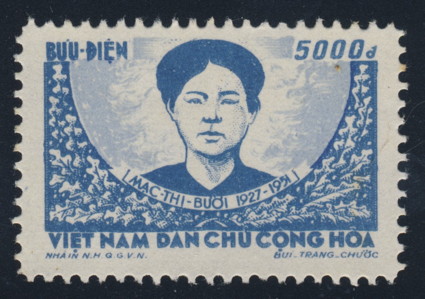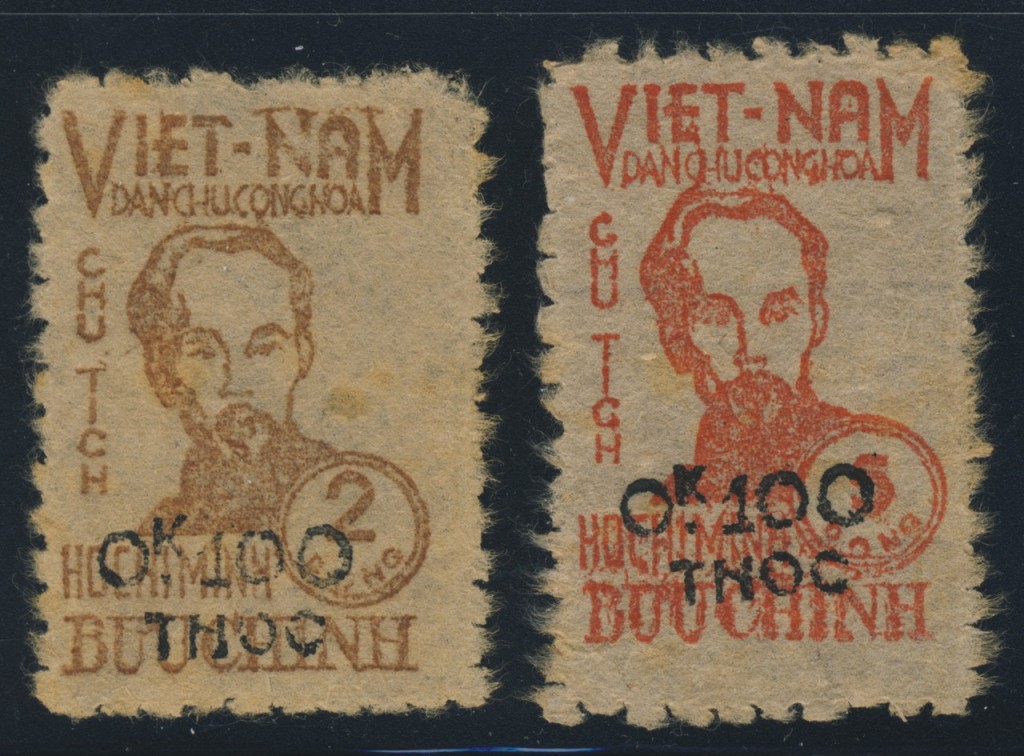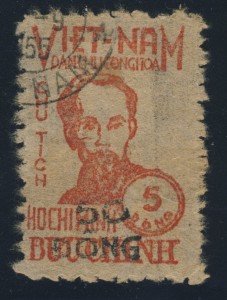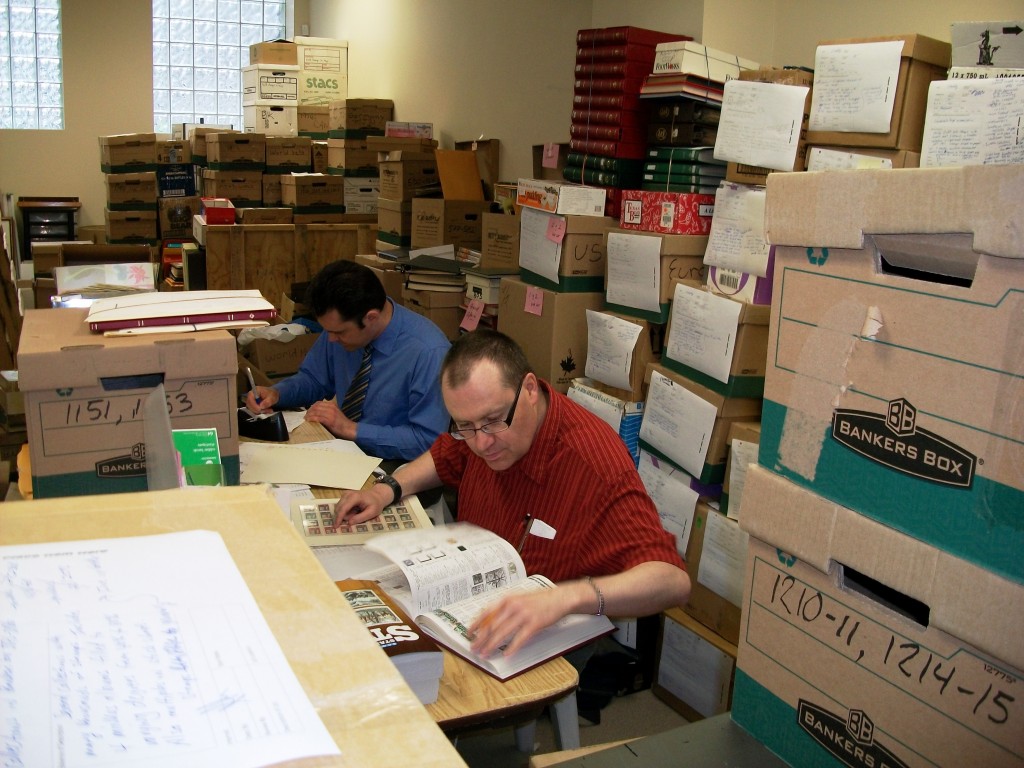Our Friday post about Vietnam attracted the attention of Southeast Asia collectors and prompted this message from a knowledgeable Vietnam collector:

As a commentary on Lots 1188 and 1189, these stamps were issued by the post office but were not used postally. In the early days of Vietnam, there were virtually no banks or ways to transfer money. The post office served as a bank. A person would buy a 5,000 dong ‘stamp’ and the post office would mail it to the recipient for the nomal 1 dong rate. The recipient would then redeem the ‘stamp’ at the local post office and cart home a suitcase full of paper money. Needless to say, in a society where 1 dong/cent mailed a letter, and a daily wage would have been less than 100 dong, 5,000 dong was a small fortune and very few of these postally-issued stamps were actually used. Even mint, this set is one of the most expensive Vietnamese sets, simply because the face values were so high. The stamps in Lot 1189 are definitely CTOs, as nobody would cancel a stamp of this value except ‘sock on the nose,’ and verrrry carefully. Genuinely used examples would be extremely hard to find, because once redeemed at the receiving post office, the stamp would be retained by the postal officials as a receipt, much as a bank receipt would be retained. None would have been left in private hands.

As I’m waxing poetically about one of the areas of my specialization, Lots 1190 and 1191 are also very unusual, in that they are not monetarized in terms of money, but in measures of rice. Again, in the earliest days of Vietnam, where everything was uncertain and constant challenges needed to be overcome, there was a time when there was no money in the country; at least no actual paper currency. To cope, the post office issued stamps worth the equivalent of money in the ‘currency’ best understood by the population – the rice they all ate. A similar situation would be hard to imagine in Canada, but one could equate it to a bag of potatoes, or an ounce of flour.
By the way, the reason Vietnam stamps were issued without glue was due to the shortage of horses, whose bones were an essential ingredient of glue. When I first went to Hanoi in 1992, I was amazed to see a glue pot in the main post office in Hanoi. One bought a stamp, stuck one’s finger into the glue, smeared it on the back side of the stamp, and affixed the sticky mess to the letter being sent. A petrie dish of water was placed conveniently nearby to clean off the residue of glue from one’s fingers – but no towels for drying. Now, all stamps are pre-glued, but I miss that glue pot!
Our expert then sent this followup when we asked if we could post his comments to Sparks-auctions.com:
Not many people know about the late history of Indochina or the early years of Vietnam. The tumultuous events of the civil insurrection we call the Vietnam War were on such a grand scale that normally simplistic activities such as printing and disseminating stamps seems mundane in comparison, but Vietnam’s situation was probably unique. For example, the original stamps that were overprinted in Lots 1190 and 1191 were first carved from wood, one at a time, by different people, sitting around campfires after a day’s fighting or hiding from the French. fifty of these wooden blocks were made, then inserted into a frame. The printing press was buried under straw in a village during the day, in case any French troops passed by, and was brought out at night and the stamps hand-pressed, one sheet at a time, using whatever paper was available, and vegetable dyes that were grown locally. I met one of the carvers, who is now 92, and he told me the story. They carried this manual press with them for four years, printing leaflets and stamps at night and fighting during the day. It’s quite an incredible story when you pause to consider what these young men went through, just to enable letters to be mailed.
And he added this postscript a moment later:

Further to Lot 1190, I have queried my wife and she advises me that Lot 1190 is overprinted with a currency revaluation in Dong, the local currency, but Lot 1191 is overprinted in Thoc, or a valuation based upon a small quantity of rice, probably a cupful. All the stamps were overprinted in this way, so the stamps are not particularly rare, but it should be of interest to readers of your site to learn something a bit unusual. There aren’t many examples in philately where stamps have been valued in a commodity rather than a currency.
We have encouraged our correspondent to consider expanding his observations into an article, using other fascinating background knowledge including a visit to Cotevina, the government stamp printing company.
The auction starts tomorrow. Check the opening bids to find last minute bargains as there are still lots of them. Good luck!




